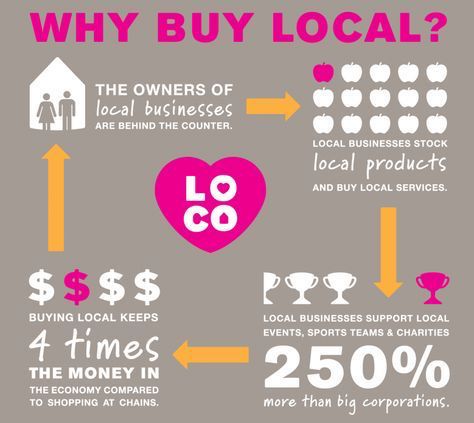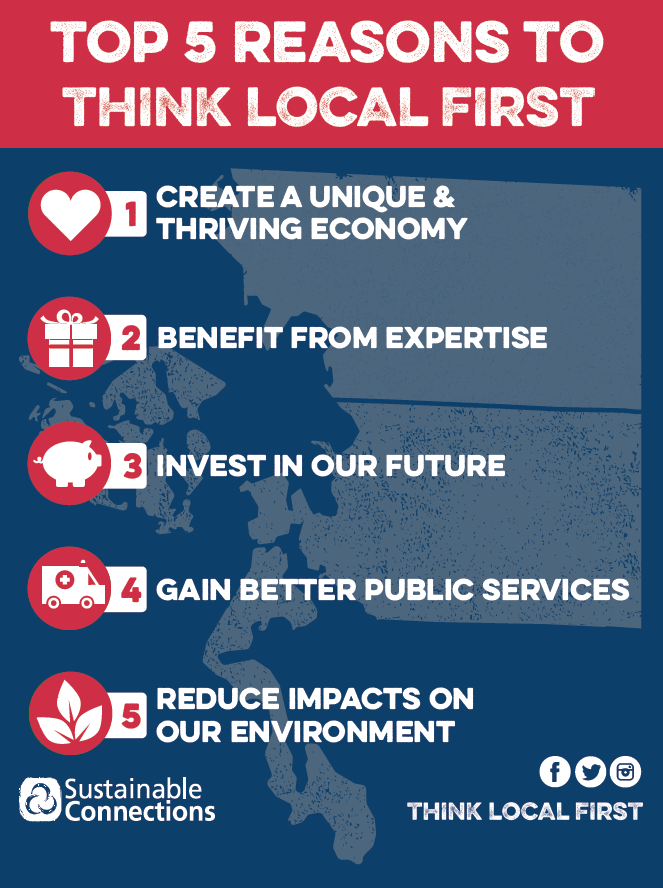How does buying local support a better economy?
Do you buy local? Or buy from massive international corporations? Your decision makes a big difference.
To understand why, we need to examine the idea of working capital. This is an important aspect of community economic resilience. Know how your purchasing behaviors can help build local resilience, or undermine it.
Transcript:
Let’s say we have our little community, represented by our cozy red circle here. All of us are engaging in normal business transactions within the community. We’re exchanging money back and forth as we go about our normal purchases, buying from each other within the local community. Buying food, stopping at a restaurant, getting our shoes repaired.
Now all these dollars flying around, what do they represent? That’s akin to working capital. The term working capital refers to the cash that a business, or a family unit, has on hand to pay for their normal operations. We’re not talking special purchases here, we’re just talking about the everyday stuff.
So for your family, that’s money for groceries, money for rent. For a restaurant business, that’s going to include salaries for the waiter or the cook, that’s going to include the cost of buying raw materials like vegetables or meat that they will use in the dishes they serve. That’s going to include money for their utilities to keep the water flowing. Stuff like that.
So what happens when someone says I’d rather have that cool widget that’s available on Amazon. So he goes and sends his money to Amazon. What does that mean? First of all, the money he spends has left our little community, and it will never return. The profits are now in the pockets of Mr. Big. We met Mr. Big in a previous post.
But with respect to local businesses, that money is gone. Sure, we’re continuing to buy and sell from each other in our local community, but now the amount of working capital that we have circulating is less. And now someone else decides they’re going to buy from one of the big international companies. More money leaves our circle. And someone else. What’s happening?
Over time, the amount of working capital available in our little circle is depleted, it’s decreasing. We probably aren’t able to calculate it, yet we’ll feel it. Things will feel tighter, more constrained. People will be much more careful about their spending, perhaps cutting out luxury items, cutting back on going to restaurants.
Meanwhile, advertising and social pressures encourage us to spend more and more money with the big companies, and we don’t have social messages that tell us why it’s important that we not do that. We don’t have social messages that explain to us how much our local community needs that working capital in order to survive.

Buy Local campaigns around the nation have produced studies that prove that local businesses are more likely to hire local employees. Local businesses are more likely to buy from other local businesses, more likely to donate to local charities. Local businesses are more likely to be paying their fair share of taxes to support local resources like schools and fire departments.
By contrast, big business sidesteps most of this. When they do contribute to a local scene, it is pennies on a dollar compared to the support that local businesses give to the local community.
So this is how every dollar that you spend at local businesses can help support your local community. And every dollar you spend with the big guys eventually undermines the businesses of your friends and neighbors, the businesses you know and love.

Reflection – Working Capital
Next time you get ready to go shopping — in-person, or online — pause a moment to think about your planned purchases. Rather than the automatic process of going to your “usual” supermarket, mall, or big box store, which of these purchases could be made from local vendors or local supply chains instead?
Let’s take the example of groceries: Instead of heading to the major supermarket, first prioritize your shopping list. Which items could you seek at a farmer’s market, or from a backyard barter arrangement like a crop swap? For those items you cannot get from local growers, which could you find through a small business, or a locally-owned store (especially one which labels locally-produced items)? Turn to the megacorporation-supermarket only as a last resort, for those few items which you cannot find elsewhere.
You can apply this prioritization to everything from clothing to craft materials to home goods. Every bit of your regular business that you can pull away from the Big Guys and redirect toward mom-and-pop, local supply networks, and small locally-owned chains helps. It helps build our local community resilience. It keeps those dollars from leaving our 99% circles. It helps support the local economy.
This post is part of the What We Can Do series — see the full project.



